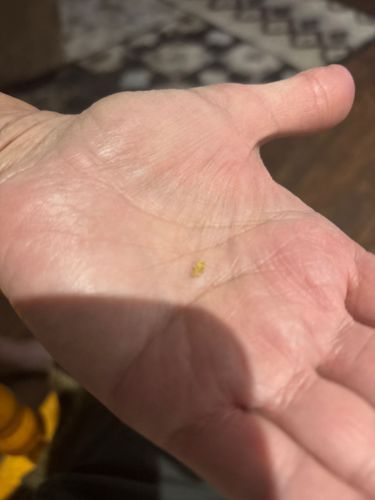Aphid
Scientific Name: Aphidoidea (Superfamily, as specific species cannot be determined from this image)
Order & Family: Hemiptera, Aphididae
Size: Typically 1-3 mm (0.04-0.12 inches) in length, though some species can be larger.

Natural Habitat
Aphids are found on a wide variety of plants, both cultivated and wild. They inhabit gardens, agricultural fields, forests, and indoor plants.
Diet & Feeding
Aphids are phytophagous, meaning they feed exclusively on plant sap. They use their piercing-sucking mouthparts to extract nutrients from the phloem of plants.
Behavior Patterns
Aphids are typically colonial, living in large groups on plants. They reproduce rapidly, often through parthenogenesis (asexual reproduction), allowing populations to grow quickly. They are largely sessile once they find a suitable feeding spot, but winged forms can develop to disperse to new host plants when conditions become crowded or food scarce. They excrete honeydew, a sugary substance, which can attract ants (who sometimes 'farm' aphids for honeydew) and can lead to sooty mold growth on plants.
Risks & Benefits
Aphids are considered significant agricultural and garden pests. They can cause direct damage to plants by stunting growth, curling leaves, and distorting fruits/flowers due to sap feeding. More critically, they are notorious vectors for plant viruses, transmitting diseases from one plant to another. The honeydew they secrete encourages the growth of sooty mold, which can reduce photosynthesis. While generally considered pests, they are a food source for many beneficial insects (e.g., ladybugs, lacewings) and birds, playing a role in food webs.
Identified on: 9/1/2025